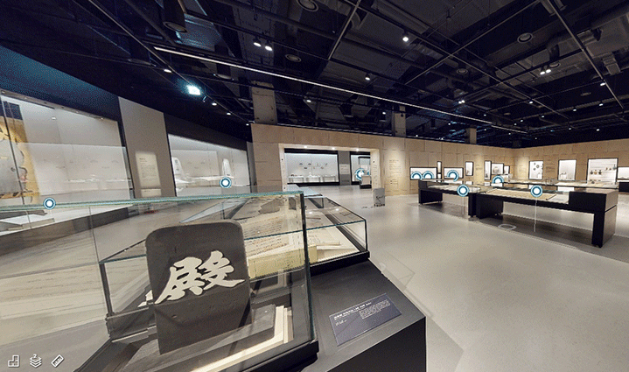- Date
- Dec 10, 2020
- Venue
- B1 Permanent Exhibition Gallery, Gyeonggi Province Museum

Online
VR Online Exhibition at the Permanent Exhibition Hall
Established in 1996, Gyeonggi Province Museum, marking its 25th anniversary this year, is a public museum where visitors can experience the history and culture of Gyeonggi Province through relics and artifacts from ancient to modern and contemporary times. In our renovation, we have largely focused on three areas.
First, we have transitioned from a 'dark and closed space' to a 'bright and open space.' We sought to create a more bright and pleasant atmosphere with modern interiors by removing walls and ceilings and exposing concrete pillars and construction materials such as transparent glass.
Second, we have transformed from 'walking in a straight line in one direction and displaying artifacts by material' to a 'choice of circulation pathway and integrated exhibition by era.' We have changed the structure of the exhibition galleries from History – Archaeology – Documentary Materials – Folk Customs – Calligraphy and Painting – Donated Relics to Prehistoric and Ancient Periods
– Goryeo – Joseon – Modern and Contemporary – Donated Relics, thereby presenting the history and culture of each era in a consolidated manner. In addition, we have doubled the size of the special exhibition hall to allow more varied exhibitions.
Third, based on our activities over the past 25 years, we have defined the identity of the history and culture of Gyeonggi Province as “the nation’s foundation, Gyeonggi” to reveal its characteristics more clearly. Moving away from the image of Gyeonggi as a seemingly subordinate region to Seoul, we have sought to present the story of the Gyeonggi people at the center of a thousand years of Goryeo and Joseon and the story of Gyeonggi culture with diversity, openness, inclusiveness, and innovation.
“Having Gyeonggi in our nation is like a tree having roots and a stream having a source. Whether politics go well in Gyeonggi determines the fate of the whole country.” This is what King Jungjong of Joseon said when he appointed Im Baekryeong (1498-1546) as Gyeonggi’s Provincial Governor. Trees deliver nutrients from their roots to the leaves and fruit, and streams run from their source to sustain all living things. Trees and streams cease to exist if their roots and sources dry up. While the nation’s capital of Seoul was comparable to a tree or a stream, Gyeonggi served as its roots and source. During the Goryeo and Joseon Dynasties, Gyeonggi was defined as "the land of the nation’s foundation." This is a key theme that runs throughout the entire story of the Museum’s renovation. Jeong Dojeon (1342-1398) and Gwon Geun (1352-1409) recited poems about mountains and rivers in Gyeonggi. Gyeonggi had bustling streets lined with shops selling products from all over the country and working sites where people sang cheerful work songs in fertile fields. The Province’s cities, which spread like branches, formed a space of civilization where the sound of books being read emanated from every home. Gyeonggi was a place for a reign of peace. Goryeo emperors or Joseon kings implemented their policies first in Gyeonggi before other areas. The products and customs from the eight provinces came to and were recreated in Gyeonggi, while the cultures and arts of foreign countries were introduced to the Gyeonggi people first before spreading across the country. Gyeonggi’s culture was born as a result of refining Korea’s own culture and that of foreign civilizations. The identity of Gyeonggi culture characterized by openness, diversity, dynamism, and innovation was created through this process. The Museum seeks to showcase the history and culture shaped by the Gyeonggi people because its thousand-year culture formed the archetype of Korea’s history and culture.

